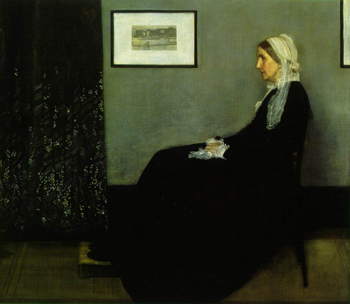
Arrangement in Grey and Black: Portrait of the Painter's Motheralso known as Whistler's Mother

|
Arrangement in Grey and Black: Portrait of the Painter's Mother (Whistler's Mother)
"Whistler's Mother," as this painting is often called, is an extraordinarily well-known image. It is, to this day, still ensconced in the landscape of popular American culture. Yet, since it was first exhibited in 1872, this painting has been consistently misunderstood.
When most people think of Whistler's Mother, they think of it as a loving tribute on Whistler's part, a sentimental portrait of a stolid New England matriarch by her devoted son. In reality, Whistler was an iconoclast expatriate, a flamboyant, acerbic Massachusetts man who lived most of his adult life in London. Arrangement in Grey and Black was actually his first attempt to strip away much of the romanticism and sentimentality of Victorian portraiture.
Through most of his career, Whistler was intrigued by flat shapes and colors. Around the time he painted Arrangement in Grey and Black, he came to believe that the most important aspects of a painting were the purely visual and aesthetic aspects--this ran completely contrary to the artistic conventions of the time. He planned to express this new credo in a portrait of his mother using very spare lines, simple shapes, and restrained colors. The portrait is essentially a collection of objects arranged around the gray surface of the wall. The black curtain, the pictures frames, the rug, and the dado form a grid in which Whistler places his principal subject. Said subject is painted as to avoid involvement with the viewer.
Upon the painting's first showing, it caused considerable controversy among viewers and critics alike. Some derided it for its peculiar coloring, composition, and flatness of emotion. Others admired the artist's technique, or what they saw as the spiritual character of the sitter. Whistler went on to paint other portraits in a similar style, but none would achieve the notoriety that this one did.












